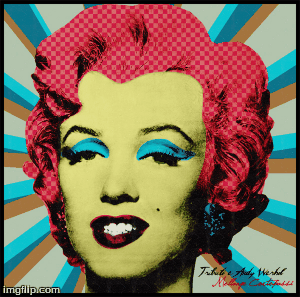
What was it to be American in the 1950s? Alive in post-war Germany? Portraiture, more than abstract, people-less canvases, forces us to weigh these questions. Picasso, Warhol, even Gerhard Richter, with his smudgy landscapes, understood the power of a face staring out of a canvas. Confronted with one, the sensitive viewer must throw her empathy across time, enact a kind of ventriloquism where the dummy is in another room.
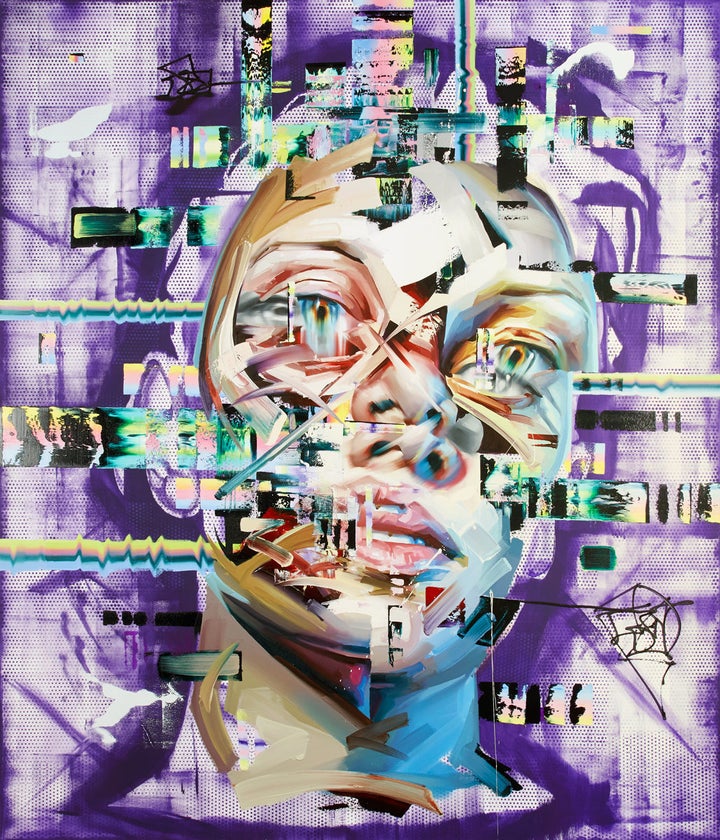
“It’s defining,” the painter Justin Bower recently told The Huffington Post over the phone. We were discussing the bounds of portraiture as they apply to Bower's solo show "The Humiliations," closing this week at Unix Gallery in New York. Bower, a West Coast tech art staple, name-checked Warhol's famed portraits of Marilyn Monroe as a specific water mark, a series that, as he puts it, "can’t define an age any more clearly."
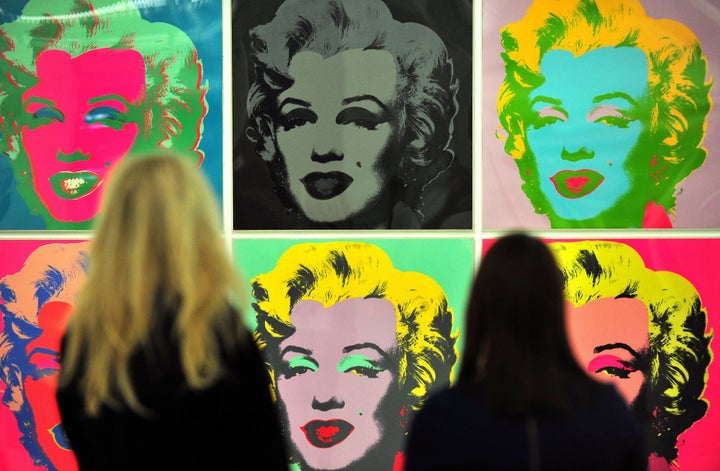
Internet friendly and disorienting all at once, Bower’s portraits shift with stripes of color and shape. It’s possible to see decades of art history and pop culture in the interplay: from Salvador Dali’s trick painting of his lover Gala, built in blocks to look from afar like an image of Abraham Lincoln, to that oddly beautiful television warning screen from the 1990s -- the bars of color slotted crazily together like an Ellsworth Kelly painting gone berserk.
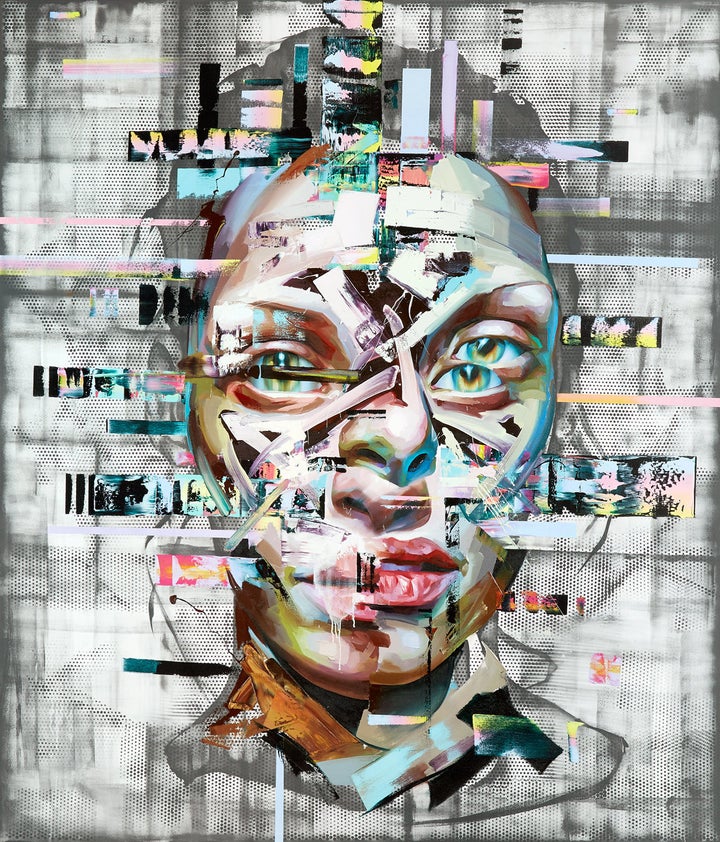
Other influences hit closer to home. Instagram, Twitter, Snapchat -- living is now a kaleidoscopic affair. Bower works in LA, ground zero for the fragmented life. Kim Kardashian may exist vividly on Instagram and differently on TV, but as a human being, she’s still a mystery to us. (Even perhaps, to herself.)
This “hall of mirrors” filter on everyday life has never really existed until now, Bower argues. What he calls an endless "reproducibility" and malleability of subject and personality is, he believes, singular to our era, and thus to his work.
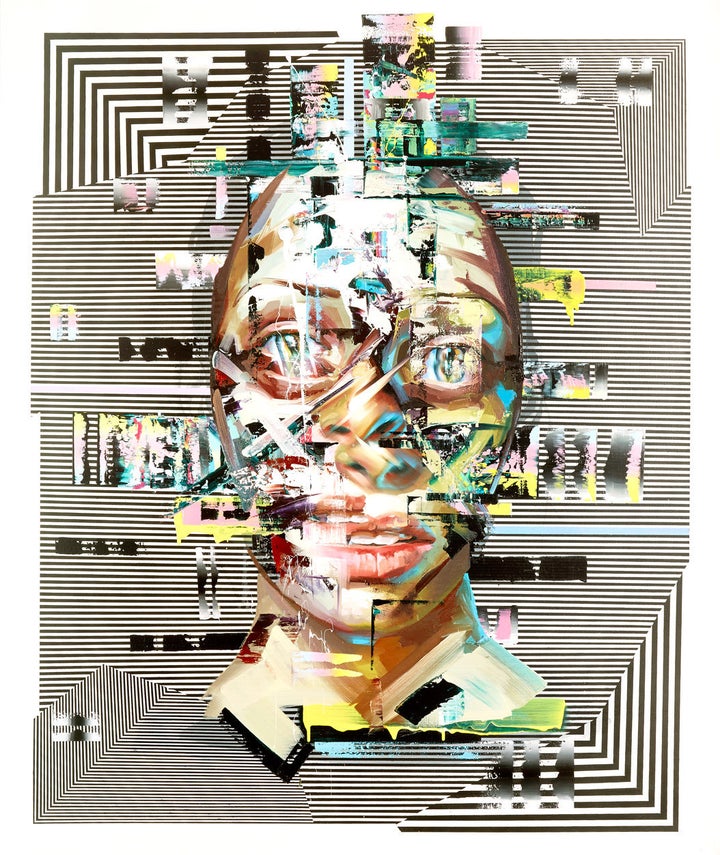
Of course, countless philosophers have deemed man unrecognizable since the Enlightenment. Their reasons vary, but the gist is the same, whether uttered by Foucault or Derrida. It's a line of thinking Bower sees as fodder. “I often wonder, why declare it anymore?” he says, of the “man is dead” trope. His scrambled subjects reference this force too, the constant attacks on the very concept of human existence at all.
Bower uses what he calls a “code" to create, in reference to computer programming. His models are anonymous, translated to the canvas as huge, destabilized faces. He sets up rules on thickness and space between lines, as well as color harmonies. His aim is for a "visual manifestation of the code that we experience all the time,” he says.
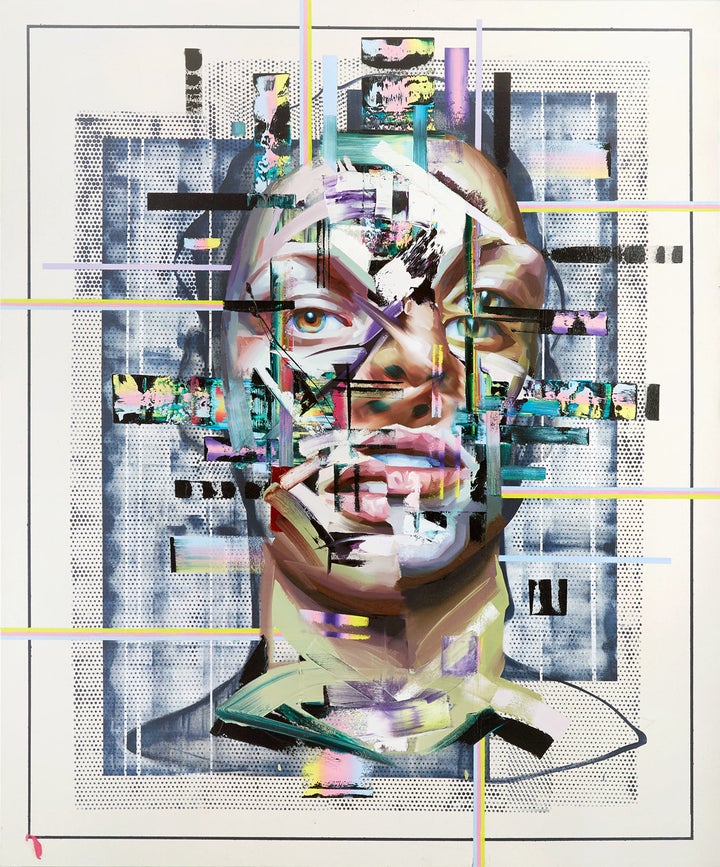
At first glance, the final result seems tailor-made for a glitch art show. But the glitch world, in which artists reconstitute accidental digital errors into visual compositions, can too easily be seen as a creation of its time. Bower likens the genre to the silkscreen works that came to define the 1960s.
Whereas he hopes to make paintings that outlast him, forcing empathy wherever they go. “I want them to be more than just the signifier of today,” he says of his portraits. “I want to dig into who we are.”
"Justin Bower: The Humiliations" will be on view at Unix Gallery in New York until Oct. 17.
Also on HuffPost:



